Key Takeaways
- Color psychology plays a crucial role in fashion and street art
- Understanding color harmony can elevate your personal style
- Street art and fashion often intersect, influencing urban aesthetics
- Seasonal color trends impact both industries
- Color-blocking techniques are powerful in both fashion and street murals
- Cultural symbolism of colors varies globally
- Sustainability in fashion is influencing color choices
- Digital art and social media are reshaping color trends in unexpected ways
The vibrant world of color weaves through our lives, painting our experiences and shaping our perceptions. Nowhere is this more evident than in the realms of fashion and street art. These two seemingly disparate domains share a common thread – the power of color to evoke emotion, challenge norms, and transform spaces.
As a fashion enthusiast who’s spent countless hours wandering city streets, camera in hand, I’ve witnessed firsthand how the kaleidoscope of hues in our wardrobes and on our walls creates a dialogue between personal expression and public space. Let’s embark on a chromatic journey to explore how color influences our clothes and the art that adorns our urban landscapes.
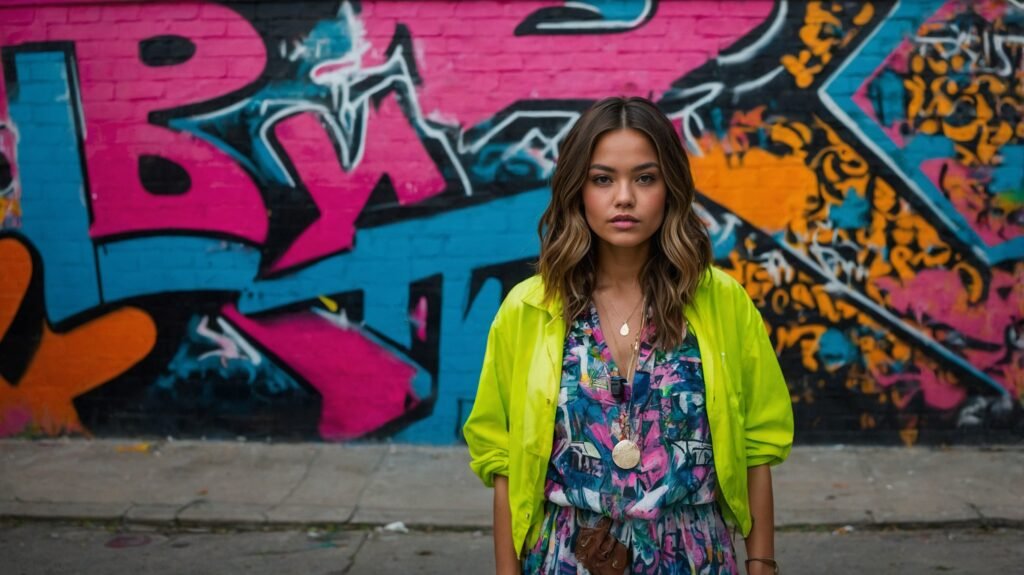
The Psychology of Color in Fashion and Art
Color is more than just a visual treat; it’s a silent communicator that speaks volumes about our personalities, moods, and cultural contexts. In both fashion and street art, color choices are deliberate, designed to provoke thought and stir emotions.
The Power of Red: Confidence and Rebellion
Red is a color that demands attention. In fashion, a red dress or a bold red lip can instantly boost confidence and signal assertiveness. I remember the first time I slipped on a pair of red stilettos – suddenly, I felt like I could conquer the world. Similarly, in street art, red often represents rebellion or urgency. Think of Banksy’s iconic red balloon girl, a symbol of hope and innocence against a stark, colorless background.
Blue’s Calming Influence: From Denim to Murals
Blue, on the other hand, exudes calm and trustworthiness. It’s no wonder that denim, in various shades of blue, has become a fashion staple across cultures. In street art, blue often appears in sweeping murals that transform harsh cityscapes into serene oases. I once stumbled upon a massive blue wave painted on the side of a building in Lisbon – it felt like a breath of fresh air in the midst of urban chaos.
Yellow’s Optimism: Sunshine in Wardrobes and Walls
Yellow is the color of optimism and creativity. In fashion, a pop of yellow can brighten even the gloomiest day. Street artists often use yellow to inject a sense of joy into neglected spaces. I’ll never forget a series of yellow smiley faces I saw stenciled along a dreary underpass in London – they turned a utilitarian walkway into a gallery of good vibes.
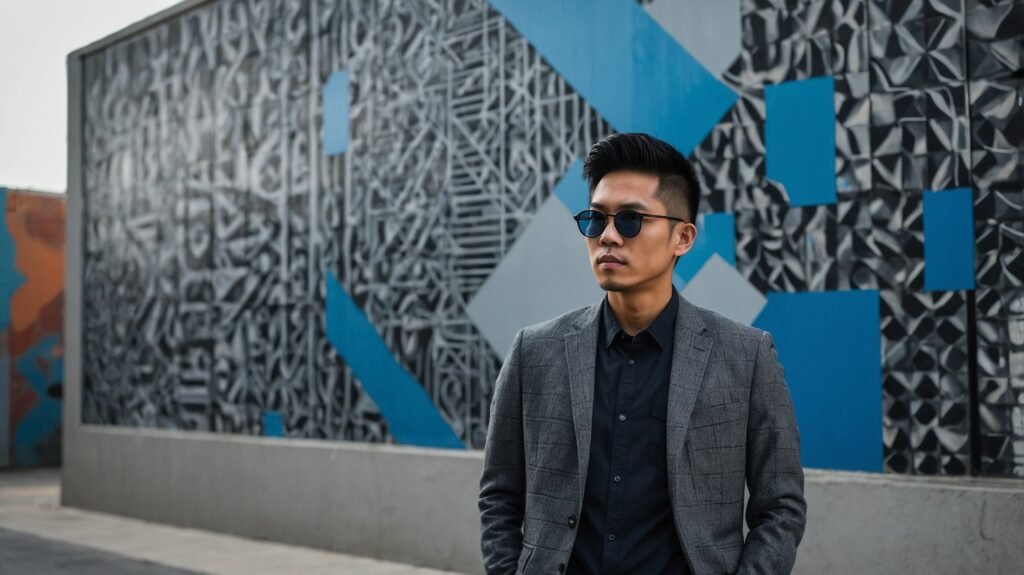
Color Harmony: Balancing Act in Style and Street
Creating harmony with color is an art form in itself, whether you’re putting together an outfit or planning a large-scale mural. The principles of color theory apply to both worlds in fascinating ways.
Complementary Colors: Striking Contrasts
Complementary colors sit opposite each other on the color wheel and create a vibrant, eye-catching effect when used together. In fashion, pairing a royal blue blazer with orange accessories can make a bold statement. Street artists often use complementary colors to make their work pop against urban backdrops. I once saw a mural in Melbourne that used purple and yellow so effectively, it seemed to vibrate off the wall.
Analogous Palettes: Subtle Sophistication
Analogous colors are neighbors on the color wheel and create a harmonious, sophisticated look. In fashion, this might translate to an outfit in shades of green, from olive to emerald. Street artists sometimes use analogous palettes to create dreamlike landscapes that seamlessly blend with their surroundings. A personal favorite was a mural I encountered in Prague that used various shades of blue and purple to depict a fantastical underwater scene.
Monochromatic Magic: Depth Through Shades
Monochromatic color schemes use different shades and tints of a single color. In fashion, this can create a sleek, elongating effect – think of an all-black ensemble with varying textures. Street artists often use monochromatic schemes to add depth and dimension to their work. I was once mesmerized by a monochromatic orange mural in Barcelona that seemed to glow like a sunset, despite using only one hue.
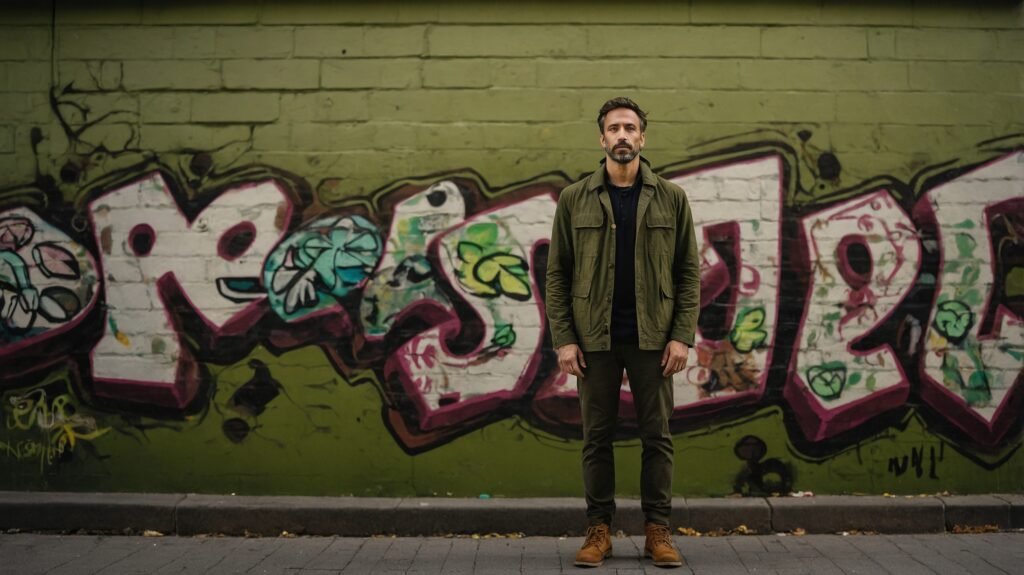
Seasonal Color Trends: Nature’s Influence on Urban Aesthetics
Just as nature cycles through its seasonal palette, so too do fashion and street art evolve with the changing of the leaves. These cyclical trends reflect our deep connection to the natural world, even in the heart of our most concrete jungles.
Spring Awakening: Pastels and Fresh Hues
As the world bursts into bloom, fashion embraces soft pastels and fresh, vibrant greens. Street art often mirrors this renewal, with artists creating murals that celebrate new beginnings. I recall a stunning piece in Tokyo that transformed an entire alleyway into a cherry blossom wonderland, perfectly timed with the actual sakura season.
Summer Heat: Bold and Bright
Summer fashion bursts with bold brights – think tropical prints and neon accents. Street artists often use this season to create their most daring, colorful works. One sweltering August in New York, I watched an artist cover an entire building facade in a riot of hot pinks, electric blues, and sunflower yellows. It was like the city itself was throwing a color party.
Autumn’s Rich Palette: Earthy Tones
As leaves turn, fashion gravitates towards warm, earthy tones like burnt orange and deep burgundy. Street art often becomes more contemplative, with artists using these rich hues to create thought-provoking pieces. I once saw a mural in Berlin that used autumnal colors to depict a surreal forest scene, complete with golden leaves that seemed to float off the wall.
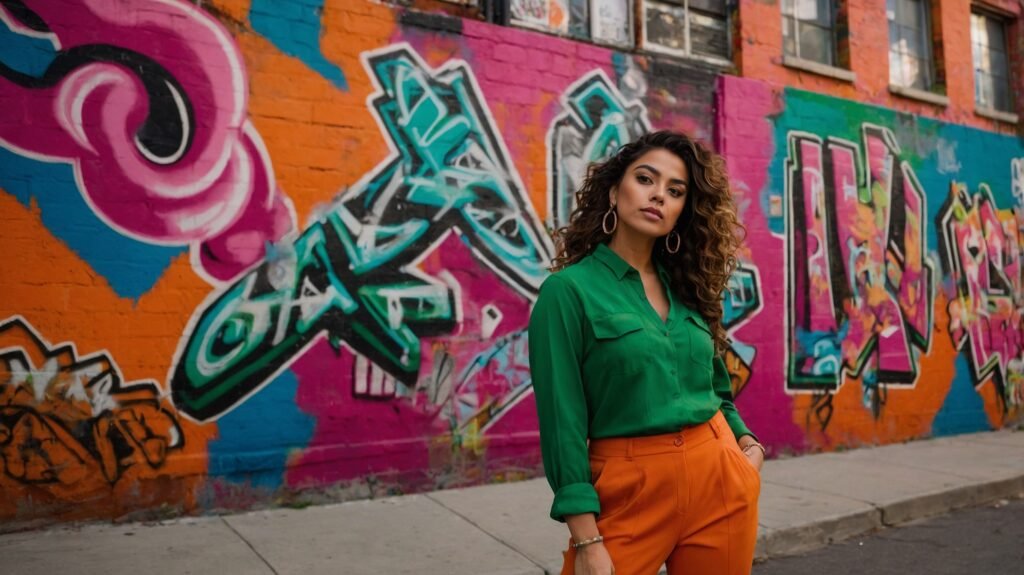
The Art of Color Blocking: From Runways to Alleyways
Color blocking is a technique that’s taken both the fashion world and street art scene by storm. It involves using solid colors in striking combinations to create visual impact.
Bold Geometrics: Shapes and Hues
In fashion, color blocking often involves pairing unexpected colors in geometric shapes. A dress might feature a yellow bodice with blue sleeves and a red skirt. Street artists use similar principles, creating large-scale geometric murals that transform buildings into abstract canvases. I once saw a massive color-blocked mural in Miami that turned a drab parking garage into a landmark visible from blocks away.
Contrast and Harmony: Finding the Balance
The key to successful color blocking is finding the right balance between contrast and harmony. Too much contrast can be jarring, while too little can be boring. In both fashion and street art, the most successful color blocking creates a visual rhythm that’s pleasing to the eye. I remember an outfit I put together for a gallery opening – a crimson blazer over a cobalt blue dress – that perfectly matched a color-blocked installation inside the gallery. It felt like I was part of the art itself!
Unexpected Combinations: Breaking the Rules
Sometimes, the most exciting color blocking comes from breaking traditional color rules. In fashion, this might mean pairing traditionally clashing colors like purple and green. Street artists push these boundaries even further, creating murals that challenge our perceptions of color harmony. I once saw a piece in Sao Paulo that combined neon orange, deep teal, and hot pink in a way that shouldn’t have worked but somehow created a mesmerizing visual symphony.

Cultural Color Symbolism: Global Influences on Fashion and Art
Colors carry different meanings across cultures, influencing both fashion choices and artistic expression. As our world becomes increasingly interconnected, these cultural color associations create a rich tapestry of global influences.
Red’s Many Meanings: From Luck to Revolution
In Chinese culture, red symbolizes luck and prosperity, which is reflected in traditional garments and modern fashion. In Western contexts, red often signifies passion or danger. Street artists around the world play with these varied meanings. I once saw a mural in Hong Kong that cleverly juxtaposed traditional Chinese red with more Western interpretations, creating a dialogue about cultural identity.
White: Purity and Mourning
While white is associated with purity and weddings in many Western cultures, it’s a color of mourning in some Eastern traditions. This duality is often explored in both fashion and street art. A Japanese designer I met created a collection that used white to represent the cycle of life and death, which was later echoed in a series of street murals across Tokyo.
Green: Nature and Spirituality
Green is universally associated with nature, but its spiritual significance varies. In Islamic cultures, green holds special importance, while in Western contexts it often represents growth or envy. Street artists frequently use green to comment on environmental issues. I was particularly moved by a series of green murals in Mexico City that transformed a polluted neighborhood into a visual oasis, sparking conversations about urban ecology.
Purple: Royalty and Creativity
Historically associated with royalty due to the rarity of purple dye, this color now often represents creativity and individuality. In fashion, purple is used to make bold statements, while street artists use it to add a touch of magic to urban spaces. I’ll never forget a stunning purple-dominated mural I saw in New Orleans that seemed to pulse with the city’s musical energy.
Black and Gold: Elegance Across Cultures
The combination of black and gold is seen as elegant and luxurious in many cultures. This pairing is a staple in high fashion and is often used by street artists to add a touch of opulence to their work. In Dubai, I saw this combination used to stunning effect in both the fashion boutiques and the street art, creating a cohesive urban aesthetic that spoke to the city’s blend of tradition and modernity.
Sustainability and Color: Eco-Friendly Hues in Fashion and Urban Art
As environmental concerns take center stage, both the fashion industry and street art community are exploring more sustainable approaches to color. This shift is not just about using eco-friendly materials, but also about reconsidering our relationship with color itself.
Natural Dyes: A Return to Roots
Fashion designers are increasingly turning to natural dyes derived from plants, minerals, and even food waste. These dyes often produce softer, more muted colors that have a charm all their own. Street artists are also experimenting with natural pigments, creating murals that change and fade over time, reflecting the impermanence of nature. I once watched an artist in Bali create a stunning mural using only locally-sourced natural pigments – it was like watching the earth itself paint.
Upcycled Color: Finding Beauty in the Discarded
The upcycling movement has given new life to discarded materials, often in unexpected color combinations. Fashion designers are creating patchwork garments from fabric scraps, while street artists are incorporating found objects into their murals. In Amsterdam, I saw a fascinating installation made entirely of plastic waste retrieved from canals, arranged in a rainbow spectrum that was both beautiful and sobering.
Minimalist Palettes: Less is More
As part of the sustainability movement, there’s a growing appreciation for minimalist color palettes in both fashion and art. By using fewer colors, designers and artists can reduce waste and create timeless pieces. I was struck by a monochromatic fashion collection I saw in Copenhagen that used varying shades of undyed organic cotton – it was a powerful statement on conscious consumption.
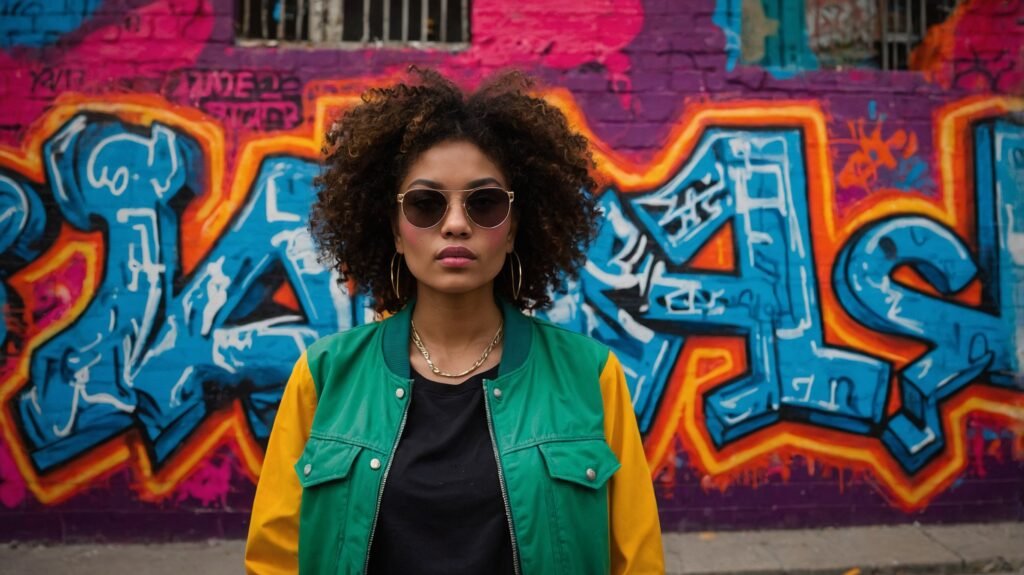
Digital Art and Social Media: New Frontiers in Color Trends
The digital revolution has dramatically changed how we interact with color in both fashion and art. Social media platforms and digital art tools are creating new possibilities for color experimentation and trend-setting.
Instagrammable Hues: The Rise of Millennial Pink and Gen Z Yellow
Social media has given rise to specific colors that dominate our feeds. Millennial Pink and Gen Z Yellow are prime examples of how digital platforms can catapult certain hues to iconic status. These colors have crossed over from the digital realm to influence both fashion and street art. I remember walking through a neighborhood in Los Angeles that seemed entirely painted in these Instagram-friendly shades – it was like stepping into a social media feed.
AR and VR: Virtual Color Experiences
Augmented and virtual reality are opening up new possibilities for experiencing color in both fashion and art. Virtual fashion shows allow designers to experiment with impossible color combinations, while AR street art can transform cityscapes with the tap of a screen. I recently tried on a virtual outfit that changed colors based on my surroundings – it felt like wearing a chameleon suit!
AI-Generated Color Palettes: The Future of Design
Artificial intelligence is now being used to generate color palettes for both fashion collections and large-scale art projects. These AI-created combinations often challenge our preconceptions about color harmony. I visited a gallery in Tokyo that featured AI-generated color schemes interpreted by human artists – the results were mind-bending and utterly unique.
Color Psychology in Marketing: Fashion Brands and Street Art Collaborations
The intersection of fashion and street art has become a powerful marketing tool, with brands collaborating with artists to create unique, color-driven campaigns that resonate with urban consumers.
Limited Edition Hues: Creating Buzz Through Color
Fashion brands often collaborate with street artists to create limited edition products in exclusive colorways. These items become instant collectibles, driven by their unique color stories. I once queued for hours to get my hands on a pair of sneakers designed by a famous street artist – the colorway was so unusual and appealing that it felt like owning a piece of wearable art.
Interactive Color Campaigns: Engaging the Public
Some brands take color marketing a step further by creating interactive campaigns that allow the public to engage with color in new ways. I participated in a city-wide scavenger hunt organized by a sportswear brand, where we had to find and photograph specific color combinations hidden in street art around the city. It was a brilliant way to get people excited about both the brand’s new color palette and the local art scene.
Color-Themed Pop-Up Spaces: Immersive Experiences
Pop-up stores and installations that focus on specific color themes have become increasingly popular. These spaces often blur the lines between fashion retail, art gallery, and interactive experience. I visited a neon-themed pop-up in Seoul that featured a curated selection of boldly colored streetwear alongside glowing art installations – it was like stepping into a living, breathing color wheel.
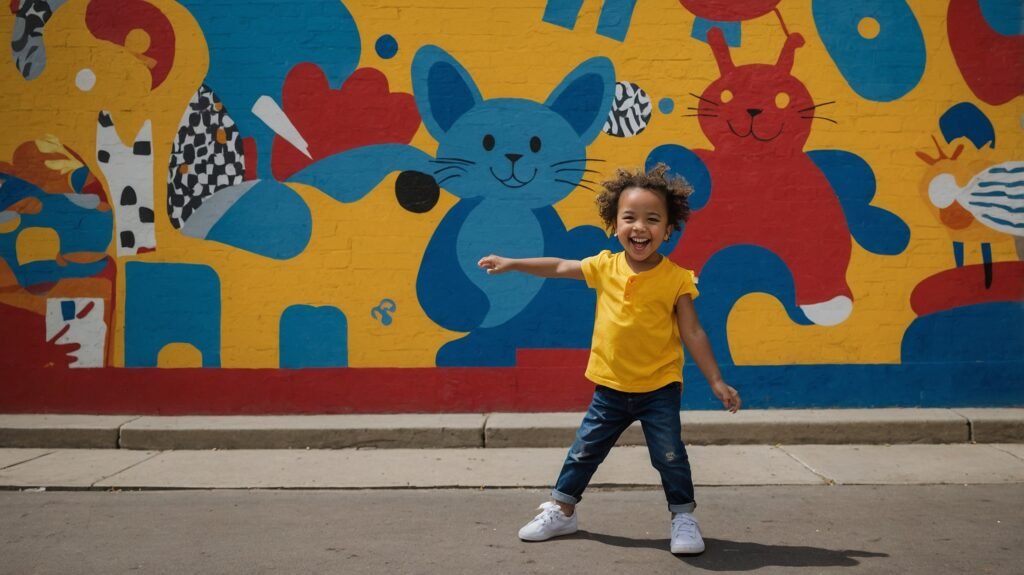
The Future of Color: Innovations in Fashion and Urban Art
As we look to the future, exciting innovations in color technology are set to revolutionize both fashion and street art. These advancements promise to change not just how we see color, but how we interact with it in our daily lives.
Color-Changing Fabrics: Adaptive Fashion
Researchers are developing fabrics that can change color in response to various stimuli like heat, light, or even mood. Imagine a jacket that shifts from blue to purple as the temperature drops, or a dress that subtly changes hue to match your emotions. These innovations could revolutionize personal style, allowing for unprecedented levels of customization and expression.
Smart Pigments in Street Art: Living Murals
Similar technology is being applied to paints and pigments, allowing for street art that evolves over time or responds to environmental factors. I recently saw a prototype for a mural that changes color based on air quality – not only was it visually stunning, but it also served as a powerful environmental statement.
Bioluminescent Colors: Glow-in-the-Dark Fashion and Art
Inspired by nature’s own light shows, scientists are working on developing safe, sustainable bioluminescent materials for use in both fashion and art. The potential for glowing garments and softly illuminated street art could transform our urban nights into magical, color-filled experiences.
Summary Table
| Aspect | Fashion | Street Art | Impact |
|---|---|---|---|
| Color Psychology | Used to evoke emotions and boost confidence | Creates mood and atmosphere in public spaces | Influences personal and collective experiences |
| Seasonal Trends | Reflects changing seasons in clothing choices | Mirrors natural cycles in urban aesthetics | Connects urban life to natural rhythms |
| Cultural Symbolism | Incorporates global color meanings in designs | Explores cultural narratives through color choices | Facilitates cross-cultural dialogue |
| Sustainability | Shift towards natural dyes and eco-friendly processes | Experimentation with natural pigments and upcycled materials | Promotes environmental consciousness |
| Digital Influence | Virtual try-ons and social media-driven color trends | AR installations and AI-generated color palettes | Blends physical and digital color experiences |
Conclusion
As we’ve journeyed through the vibrant intersection of fashion and street art, it’s clear that color is far more than just a visual element – it’s a powerful language that speaks to our emotions, our cultures, and our shared human experience. From the clothes we choose to wear to the murals that transform our city walls, color shapes our world in profound and often unexpected ways.
Looking ahead, the future of color in both fashion and street art is bright and full of possibility. As technology continues to advance, we may soon find ourselves wearing garments that change color at will or walking past murals that interact with us in real-time. Yet, even as we embrace these innovations, the fundamental power of color to move us, inspire us, and connect us remains constant. Whether it’s a boldly hued street art piece that stops us in our tracks or a carefully chosen outfit that makes us feel invincible, color will always be an integral part of how we express ourselves and experience the world around us.
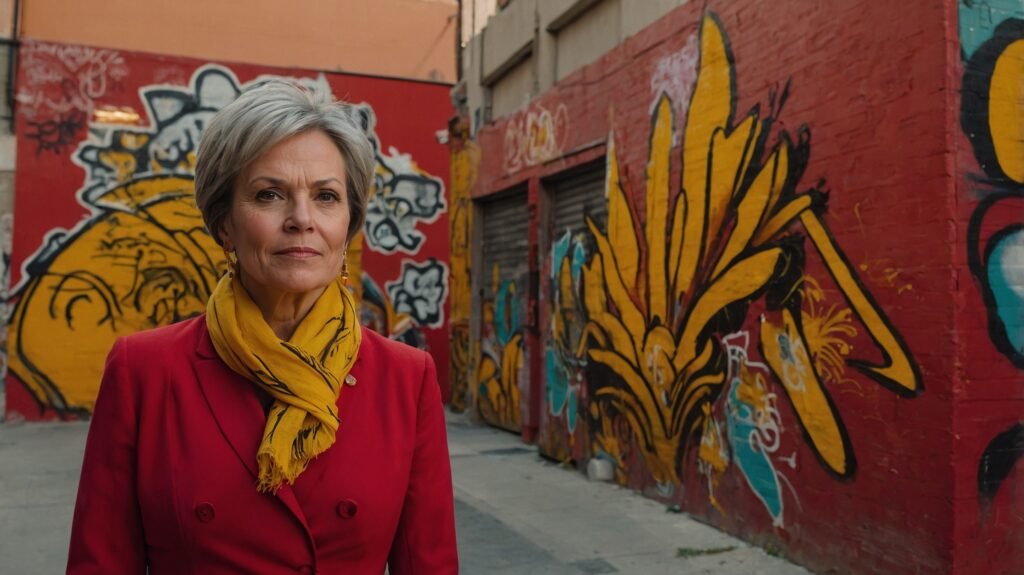
Frequently Asked Questions
How do fashion designers choose color palettes for their collections?
Fashion designers often draw inspiration from a variety of sources when selecting color palettes. They might look to nature, art, cultural trends, or even specific themes or concepts. Many designers also work with color forecasting agencies that predict upcoming color trends based on social, economic, and cultural factors. Additionally, designers consider their brand identity, target audience, and the season for which they’re designing. They often create mood boards and experiment with different color combinations before finalizing their palette. It’s a process that blends creativity, market research, and intuition.
Can street art influence fashion trends?
Absolutely! Street art and fashion often engage in a dynamic dialogue, influencing each other in numerous ways. Street artists frequently comment on or draw inspiration from current fashion trends, while fashion designers look to street art for fresh color combinations and graphic elements. Many fashion brands have collaborated directly with street artists on collections or campaigns. Additionally, the bold, vibrant colors often used in street art can spark new color trends that ripple through the fashion world.
What are some tips for incorporating bold colors into my wardrobe?
Integrating bold colors into your wardrobe can be exciting and transformative. Start small with accessories like scarves, bags, or shoes in vibrant hues. Pair a bold-colored piece with neutrals to create balance – for example, a bright yellow top with classic blue jeans. Experiment with color blocking by combining two or three solid, contrasting colors in one outfit. Consider your skin tone and choose colors that complement it. Don’t be afraid to mix unexpected colors, like purple and green or orange and pink. Remember, confidence is key – wear colors that make you feel great!
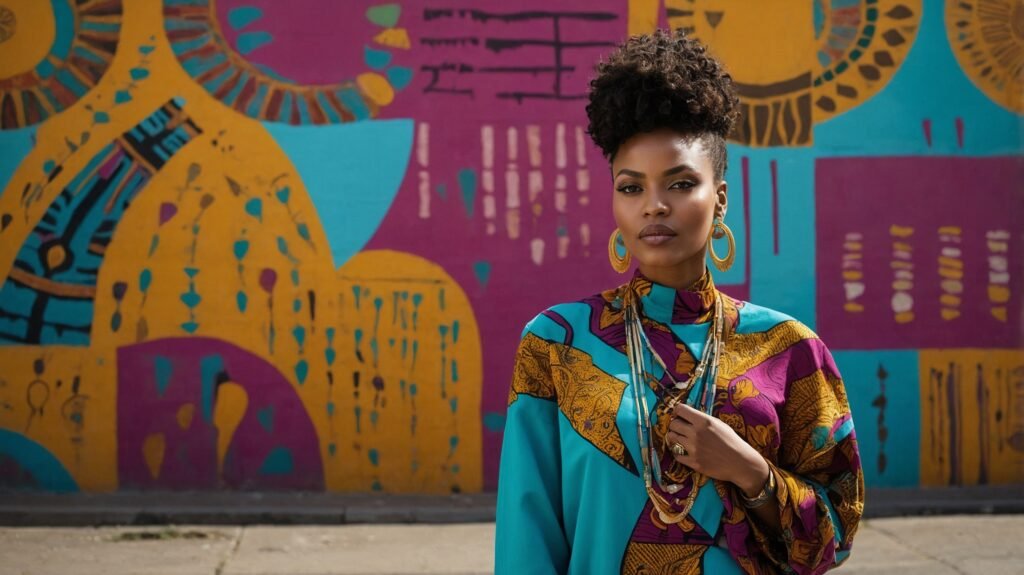
How does the psychology of color apply to both fashion and street art?
Color psychology plays a crucial role in both fashion and street art by influencing emotions, perceptions, and behaviors. In fashion, colors can affect how we feel wearing certain garments and how others perceive us. For instance, red might make us feel more confident, while blue can project trustworthiness. In street art, colors can transform the mood of entire neighborhoods. A vibrant mural might energize a community, while cooler tones could create a sense of calm in a busy urban area. Both fashion designers and street artists use this understanding of color psychology to create intentional responses and experiences.
What are some sustainable practices in creating colorful fashion and street art?
Sustainability in colorful fashion and street art is an increasingly important consideration. In fashion, designers are turning to natural, plant-based dyes that are less harmful to the environment. Some are also experimenting with innovative techniques like waterless dyeing or using recycled materials to create new colors. In street art, many artists are opting for eco-friendly paints and sprays that have lower VOC (Volatile Organic Compound) content. Some are even creating biodegradable art installations. Both industries are also exploring ways to reduce water usage and minimize waste in the color creation process.
How do cultural differences impact color choices in fashion and street art globally?
Cultural differences significantly influence color choices in both fashion and street art around the world. Colors can hold different symbolic meanings across cultures – for example, while white represents purity and weddings in many Western cultures, it’s associated with mourning in some Eastern traditions. These cultural associations impact both personal fashion choices and the colors used in public art. Additionally, certain colors might be more prevalent in traditional textiles or art forms of specific regions, influencing contemporary fashion and street art in those areas. Global fashion brands and international street artists often need to consider these cultural nuances when working in different parts of the world.
What role does social media play in shaping color trends in fashion and street art?
Social media has become a powerful force in shaping color trends across both fashion and street art. Platforms like Instagram and Pinterest have made it easier for colors to go viral – think of the ubiquity of “Millennial Pink” a few years ago. Social media allows for rapid dissemination of new color trends and combinations, often blurring the lines between high fashion, street style, and street art. It also provides a platform for niche color trends to gain mainstream attention. Additionally, the visual nature of these platforms has led to an increased focus on “Instagrammable” colors that photograph well, influencing both fashion choices and street art designs.
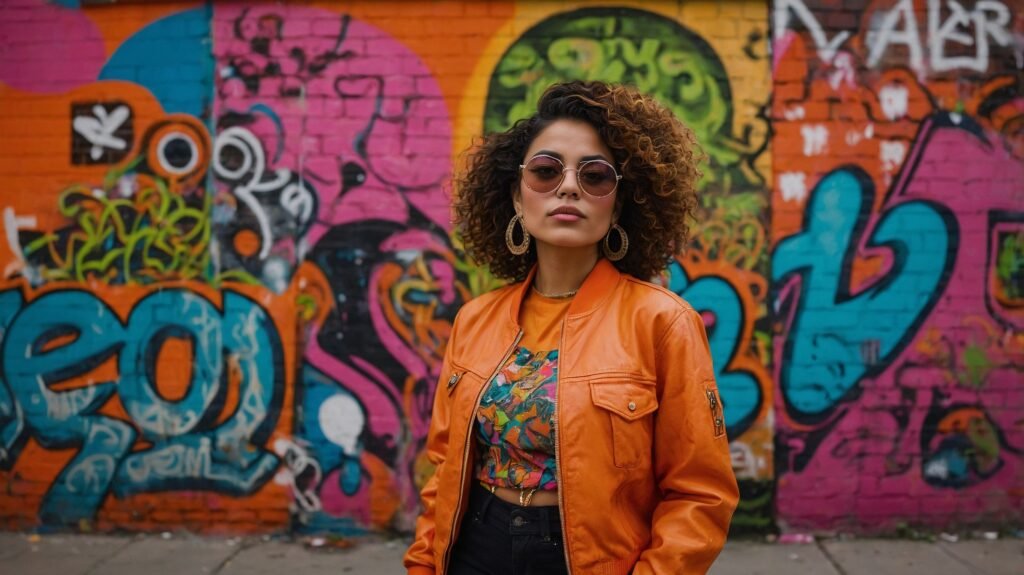
How are technological advancements changing our interaction with color in fashion and art?
Technological advancements are revolutionizing our interaction with color in both fashion and art. In fashion, we’re seeing the development of color-changing fabrics that react to heat or light, allowing for dynamic, adaptable clothing. Augmented reality (AR) apps let users virtually try on clothes in different colors before purchasing. In street art, projection mapping technology allows for the creation of stunning, color-shifting murals that can change in real-time. Digital art tools have expanded the color palettes available to artists, while AI is being used to generate unique color combinations. These innovations are blurring the lines between physical and digital color experiences, opening up exciting new possibilities for both personal style and public art.

Sam Goldman, with his intuitive grasp on the art of color selection, navigates the vibrant tapestry of fashion shades, ensuring each ensemble reflects the pulse of modern trends. His knack for crafting unique yet cohesive color combinations unravels the complexities of the fashion spectrum. Beyond being a mere sentinel, Sam’s dedication transforms every reader’s wardrobe journey into a harmonious blend of contemporary elegance and timeless allure. Dive into his writings and emerge with a refreshed perspective on fashion colors.
Reviewed By: Joanna Perez and Anna West
Edited By: Lenny Terra
Fact Checked By: Matthew Mansour
Photos Taken or Curated By: Matthew Mansour
